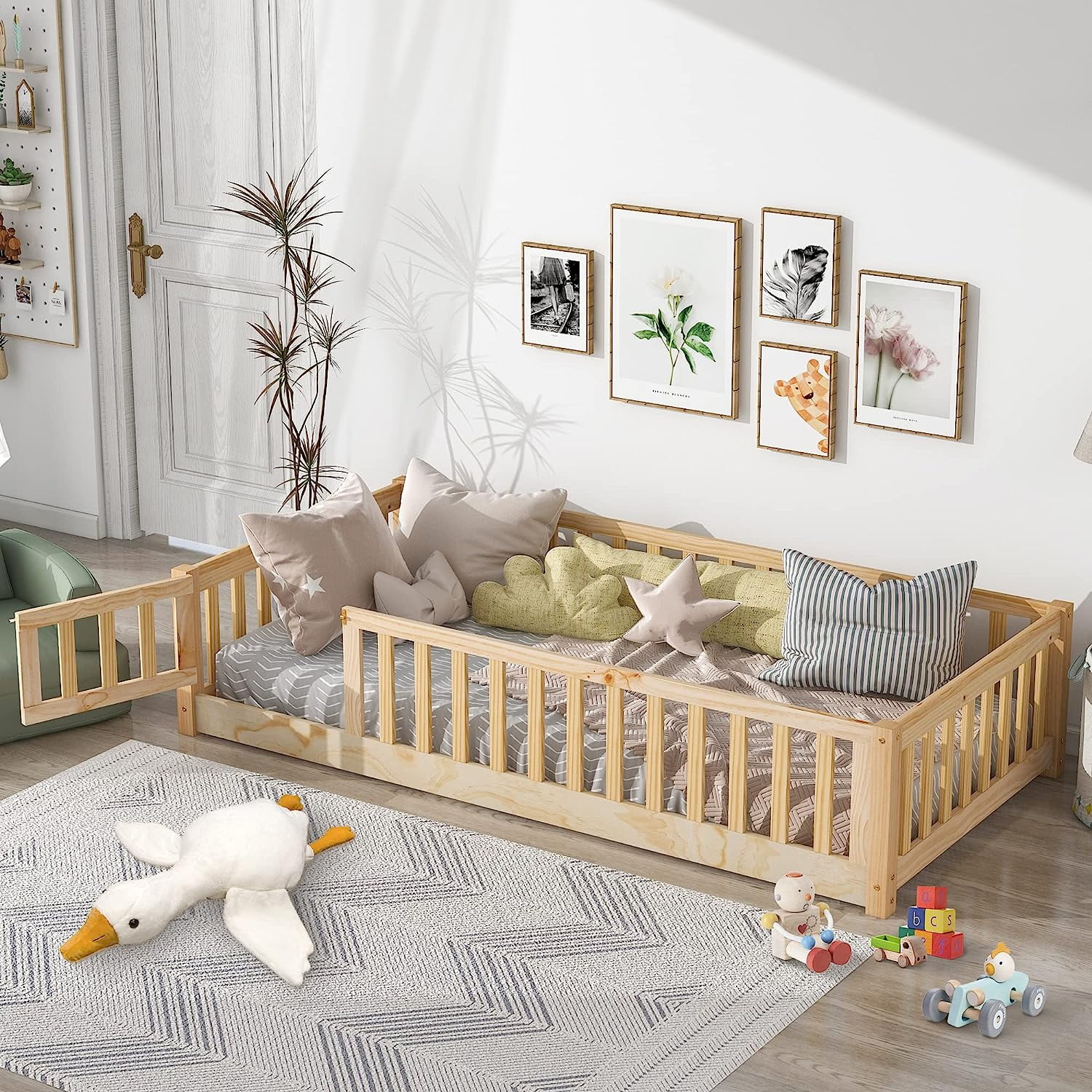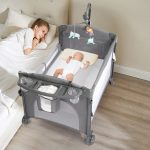Introduction: The Milestone of Transitioning to a Toddler Bed
Transitioning from a crib to a toddler bed is a significant milestone in every child’s development. As your little one outgrows the confines of their crib, finding the right toddler bed size becomes essential for ensuring their comfort, safety, and uninterrupted sleep. In this guide, we’ll delve into the factors to consider when choosing a toddler bed size and explore options to help make this transition smooth and seamless for both you and your child.

Understanding Toddler Bed Sizes: Dimensions and Variations
Toddler beds come in various sizes and dimensions to accommodate the needs of growing children. While standard crib mattresses typically measure 28 inches by 52 inches, toddler beds can vary in size depending on the design and manufacturer. Common toddler bed sizes include:
- Standard Toddler Bed: Approximately 28 inches by 52 inches, similar in size to a crib mattress.
- Extended Toddler Bed: Slightly larger than a standard toddler bed, offering extra length and width for taller or older children.
- Convertible Toddler Bed: Adaptable design that converts from a crib to a toddler bed, usually compatible with standard crib mattresses.
Considering Your Child’s Growth: Factoring in Height and Weight
When selecting a toddler bed size, consider your child’s current height and weight, as well as their expected growth trajectory. A taller or heavier child may benefit from a larger toddler bed with extra length and width to ensure ample space for comfortable sleep. Additionally, consider the height of the bed frame and mattress to ensure ease of entry and exit for your child, especially if they are transitioning from a crib with lower sides.
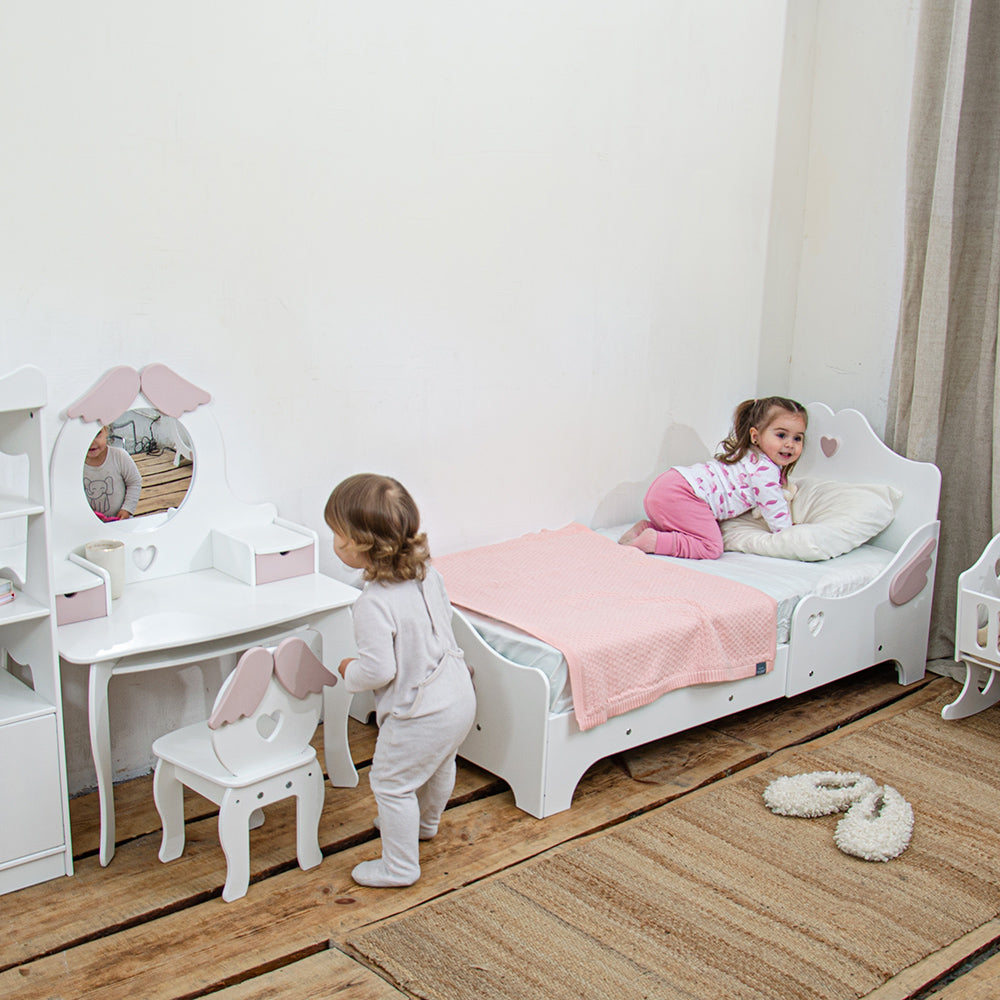
Room Layout and Space Constraints: Maximizing Bedroom Layout
The size and layout of your child’s bedroom also play a crucial role in determining the ideal toddler bed size. Measure the available space in the room and consider factors such as furniture placement, walkways, and room configuration when selecting a bed size. Opt for a toddler bed that fits comfortably within the room without overcrowding the space or obstructing access to other furniture and fixtures.
Safety Standards and Guidelines: Ensuring Compliance and Peace of Mind
When choosing a toddler bed, prioritize safety by selecting products that meet or exceed industry safety standards and guidelines. Look for certifications such as ASTM International (formerly known as the American Society for Testing and Materials) or Juvenile Products Manufacturers Association (JPMA) to ensure the bed meets rigorous safety requirements. Verify that the bed frame is sturdy and stable, with smooth edges and secure railings to prevent accidents or injuries.
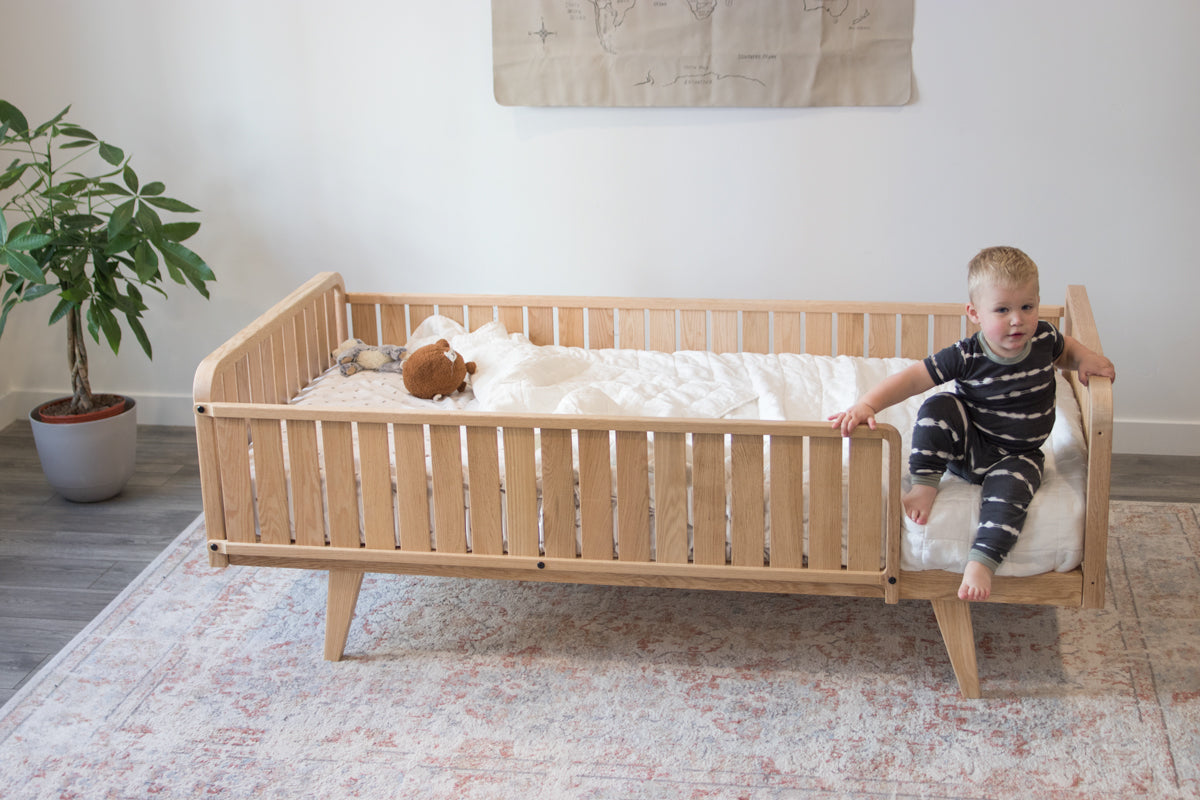
Personal Preferences and Style: Reflecting Your Child’s Personality
While safety and functionality are paramount, don’t overlook the importance of personal preferences and style when selecting a toddler bed size. Involve your child in the decision-making process and consider their favorite colors, themes, and characters when choosing a bed design. Whether opting for a classic wooden frame, a whimsical themed bed, or a convertible design that grows with your child, selecting a bed that reflects your child’s personality can make the transition to a toddler bed more exciting and enjoyable.
Budget and Affordability: Finding the Right Balance
As with any major purchase, consider your budget and affordability when selecting a toddler bed size. While there are a wide variety of options available at different price points, prioritize quality and safety over cost to ensure a durable and long-lasting investment. Explore sales, discounts, and promotions from reputable retailers to find the best value for your budget while still meeting your child’s needs and preferences.
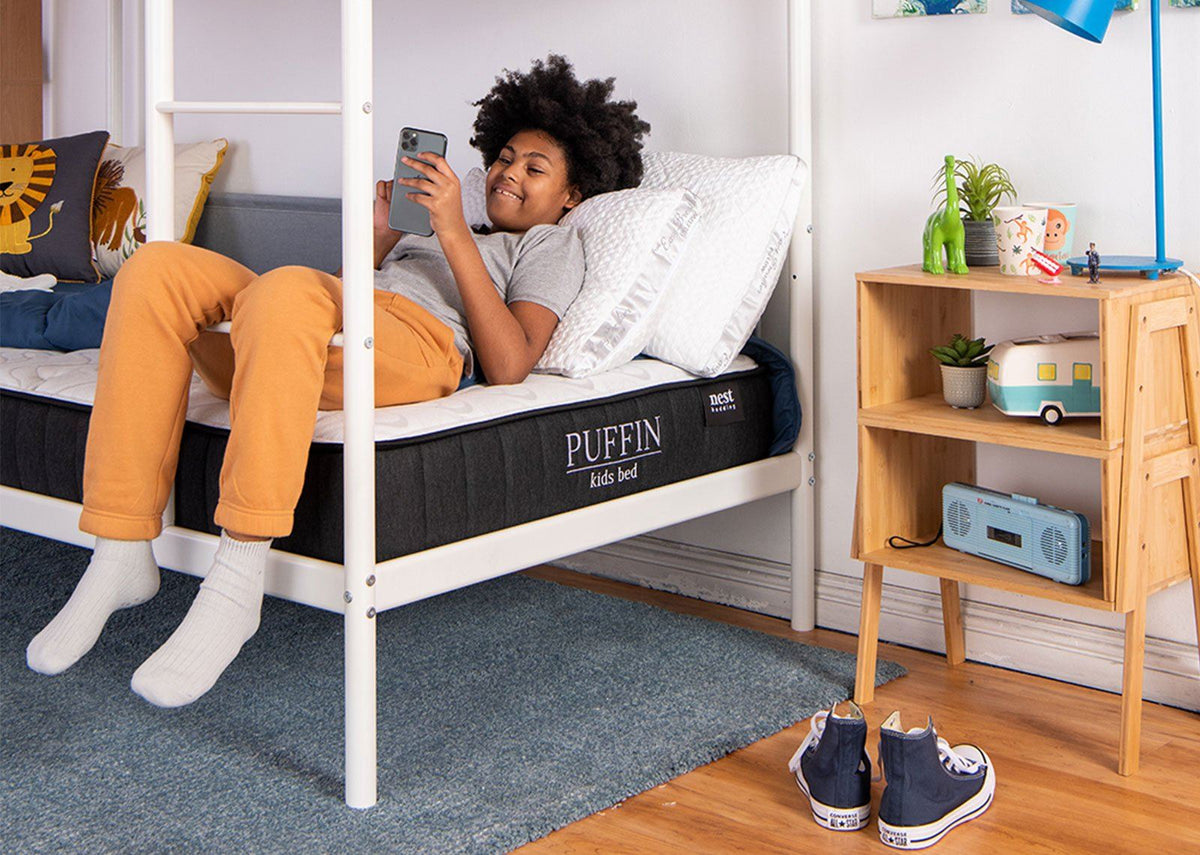
Mattress Support and Comfort: Choosing the Right Mattress
In addition to considering the size of the toddler bed, it’s crucial to select the right mattress to provide optimal support and comfort for your child. Look for a mattress that is firm yet comfortable, with adequate support for growing bones and muscles. Consider factors such as mattress thickness, material composition, and breathability to ensure a restful night’s sleep for your little one. Many toddler beds are compatible with standard crib mattresses, but be sure to measure the dimensions to ensure a proper fit.
Transitioning Techniques: Making the Move from Crib to Bed
Transitioning from a crib to a toddler bed can be a significant adjustment for both parents and children. To ease the transition, consider implementing gradual changes and positive reinforcement techniques. Start by introducing the toddler bed as a new and exciting sleeping option, allowing your child to explore and familiarize themselves with the bed during the day. Establish a consistent bedtime routine that includes reading stories, cuddling, and calming activities to help your child feel relaxed and secure in their new sleeping environment.
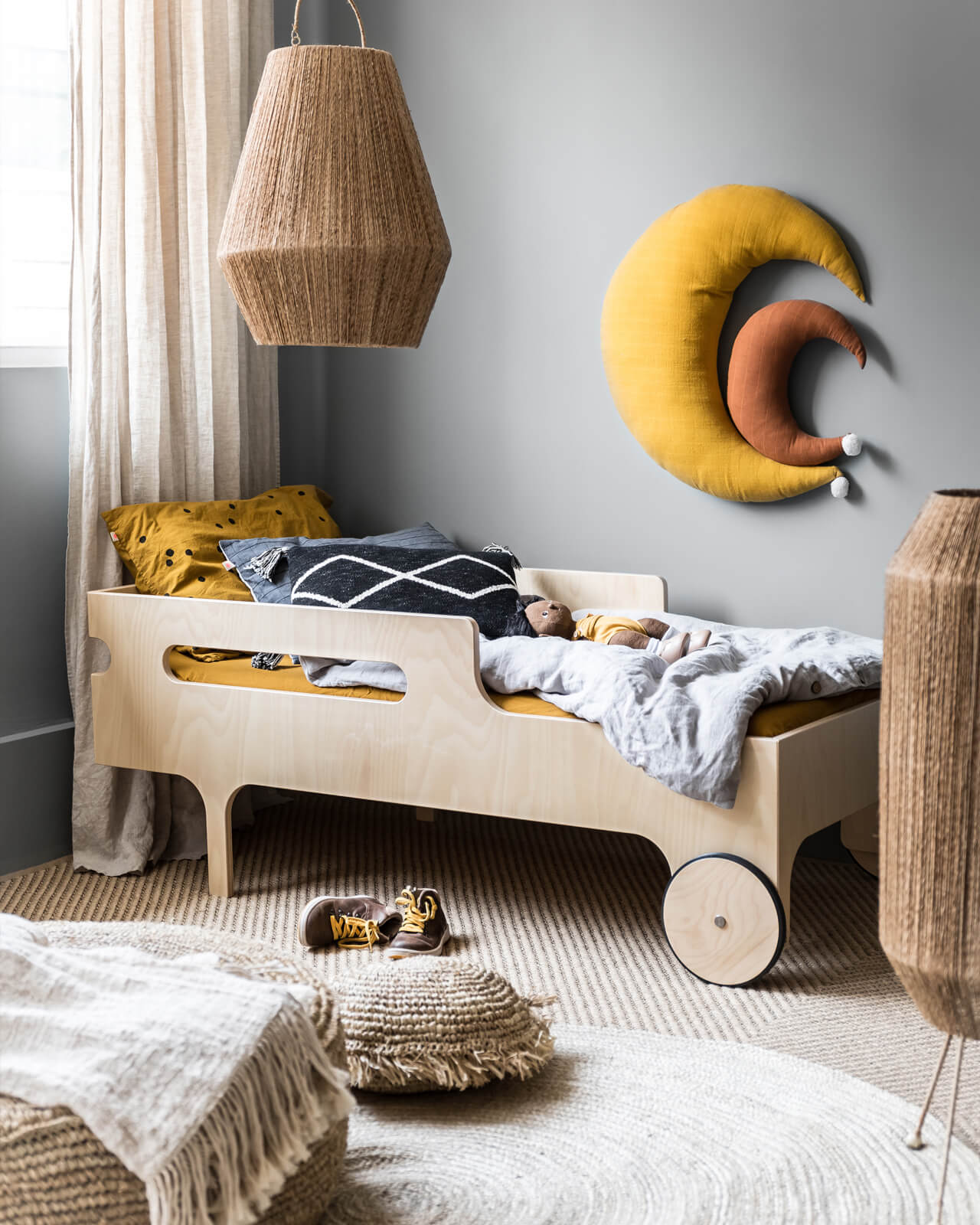
Bedtime Safety Precautions: Minimizing Risks and Hazards
As with any sleeping arrangement, it’s essential to prioritize safety when transitioning to a toddler bed. Ensure that the bed is positioned away from windows, cords, or other potential hazards to prevent accidents or injuries. Install bed rails or guardrails on the sides of the bed to prevent your child from rolling out during sleep. Additionally, teach your child safe bedtime practices such as staying in bed until morning and avoiding jumping or rough play on the bed to minimize the risk of falls or accidents.
Monitoring Progress: Adjusting to the New Sleeping Arrangement
During the initial transition period, monitor your child’s progress and comfort level with the new sleeping arrangement. Be patient and supportive as your child adapts to the change, offering reassurance and encouragement along the way. Keep an open line of communication with your child, listening to their feedback and addressing any concerns or anxieties they may have about the transition. With patience, consistency, and positive reinforcement, most children adjust to their new toddler bed smoothly and enjoy restful nights of sleep.
Conclusion: Nurturing Growth and Comfort
Transitioning to a toddler bed is an exciting milestone that marks your child’s growth and independence. By carefully considering factors such as bed size, safety, room layout, and personal preferences, you can create a nurturing and comfortable sleep environment for your little one. Whether selecting a standard toddler bed, an extended size, or a convertible design, prioritize your child’s comfort and well-being to ensure a smooth transition and restful nights for both you and your child.
